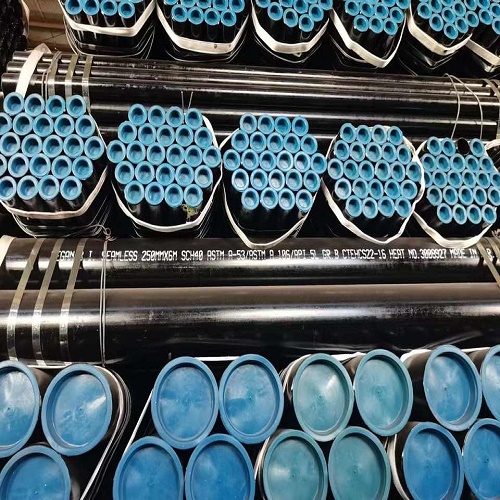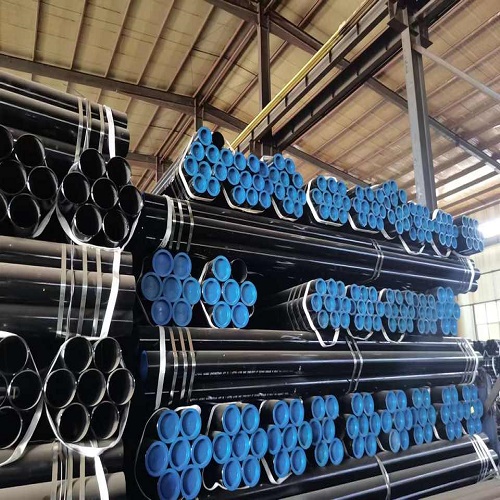The API 5L line pipe is line pipe that falls under the American Petroleum Standard. API SPEC 5L-2011 (line pipe specification) is compiled and published by the American Petroleum Institute and is commonly used around the world. The main materials of pipes are L245, L290, L360, L415, L480, GR.B, X42, X46, X56, X65, X70, X80, X100, etc.
Line pipe transports oil, steam and water extracted underground through pipelines to companies in the oil and gas industry. Line pipe includes seamless pipe and welded steel pipe. Pipe ends include flat ends, threaded ends and socket ends; connection methods include end welding, coupling connections, socket connections, etc.

API 5L line pipe processing technology:
With the development of pipeline steel plate technology and the advancement of welded pipe forming and welding technology, the application range of pipeline welded pipes has gradually expanded, especially in the large-diameter spacing range. Occupying a leading position in the field of pipeline pipes has restricted the development of stainless steel seamless pipeline pipes. In 2004, the output of seamless line pipes was approximately 400,000 tons. Steel types include X42-70, and varieties include onshore pipeline pipes and subsea pipeline pipes.
The production of high-grade steel line pipes adopts a microalloying heat treatment process. The production cost of stainless steel seamless pipes is significantly higher than that of welded pipes. As the steel grade increases, such as X80 and above steel grade line pipes, there is no limit to the carbon equivalent. Conventional processes for seamed steel pipes are difficult to meet user requirements; all 12Cr1moV alloy pipe manufacturers are conducting scientific research to improve the corrosion resistance of their line pipes and their stability in low and high temperature environments.

API 5L line pipe tempering types:
According to different performance requirements of pipeline steel pipes and different tempering temperatures, tempering can be divided into the following types:
1. Low temperature tempering (150-250℃)
The structure obtained by low temperature tempering is tempered martensite. Its purpose is to reduce the internal stress and brittleness of quenched steel while maintaining the high hardness and high wear resistance of quenched steel to avoid cracking or premature damage during use. Mainly used for various high-carbon cutting tools, measuring tools, rolling bearings and carburized parts, etc. The hardness after tempering is generally HRC58-64.
2. Medium temperature tempering (250-500°C)
The structure obtained by tempering at medium temperature is tempered troostite. The purpose is to obtain high yield strength, elastic limit and high toughness. Therefore, it is mainly used for the treatment of various hot working molds. The hardness after tempering is generally HRC35-50.
3. High temperature tempering (500-650°C)
The structure obtained by high temperature tempering is tempered sorbite. Traditionally, the heat treatment that combines quenching and high-temperature tempering is called quenching and tempering, and its purpose is to obtain comprehensive mechanical properties with good strength, hardness, plasticity and toughness. Therefore, it is widely used in important structural parts of automobiles and machine tools, such as connecting rods, bolts, gears and shafts, etc. The hardness after tempering is generally HB200-330.
Post time: Oct-11-2023